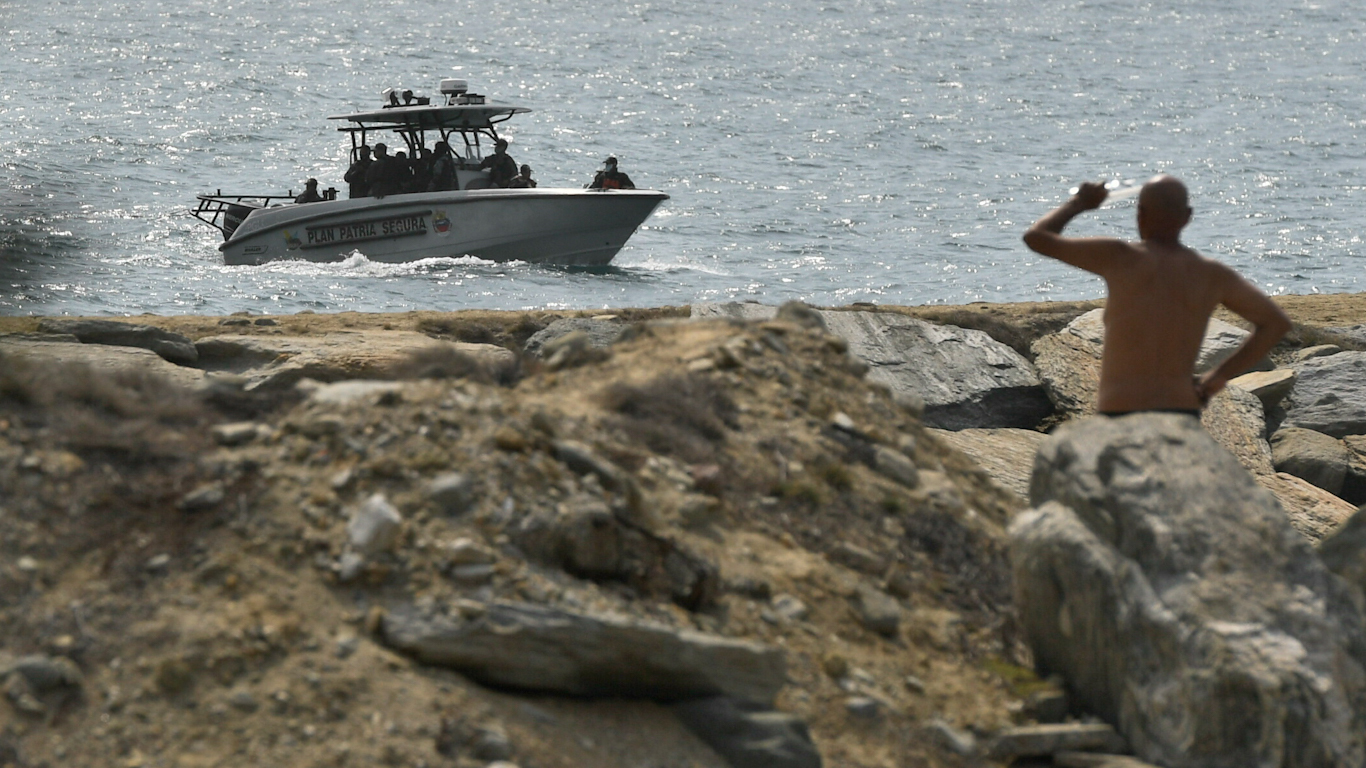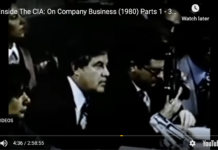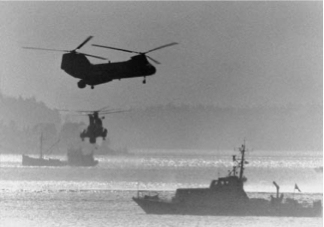
U.S. and British Intelligence Staged a Soviet Naval Incursion in Swedish Waters in Order to Turn Sweden Against Russia and Draw It Closer to the U.S.
At the North Atlantic Treaty Organization (NATO) summit in Vilnius in early July, Sweden was admitted into NATO together with Finland, pending ratification by Turkey’s Grand National Assembly.
Turkish President Recep Tayyip Erdoğan had been trying to block this move because of Sweden’s favorable treatment of Kurdish refugees, though changed its position after U.S. President Joe Biden effectively bribed him by offering him a $11-13 million line of credit by the International Monetary Fund (IMF), according to journalist Seymour Hersh, and also agreed to transfer $20 billion worth of F-16 fighter jets and modernization kits for its existing planes.

NATO was established in 1949 with the goal of containing alleged Soviet expansion, and is now perceived in Russia as a hostile Western military alliance whose main purpose is to isolate Russia and to ensure Western military supremacy around the world.
Sweden’s Social Democratic Party has supported Sweden’s joining NATO along with the country’s more centrist and right-leaning parties.[1] The Social Democrats have provided anti-ship and anti-tank missiles to Ukraine for use in its war against Russia and participated in NATO war games that were staged as a provocation toward Russia.
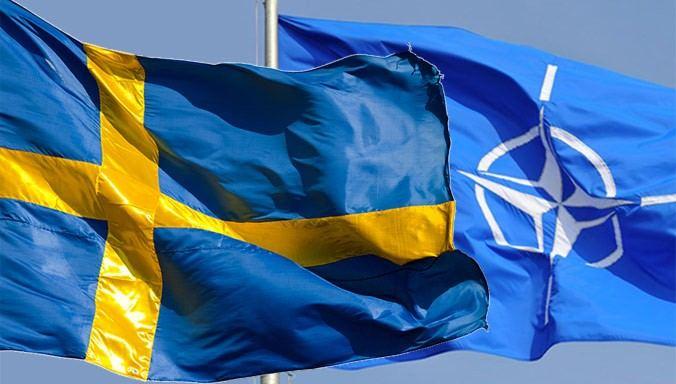
The Social Democrats’ support for NATO and the war in Ukraine represents a dramatic shift from the early 1980s when Sweden’s Social Democratic Prime Minister Olof Palme (1969-1976 and 1982-1986) supported an independent and neutralist foreign policy for Sweden and initiated a Western-Soviet dialogue on security and disarmament.
Palme had aimed to create a nuclear weapons-free zone and disarmament pact in Nordic countries, had marched in anti-Vietnam War rallies with North Vietnam’s ambassador to Sweden, and supported Third World liberation movements like the Sandinistas, the African National Congress (ANC) and FRELIMO in Mozambique, as well as the Cuban revolution.[2]
Former CIA Director James Schlesinger warned in the early 1980s that Palme’s ideals were spreading across Western Europe, which it was feared would abandon the U.S. and move to a neutral position in the Cold War.
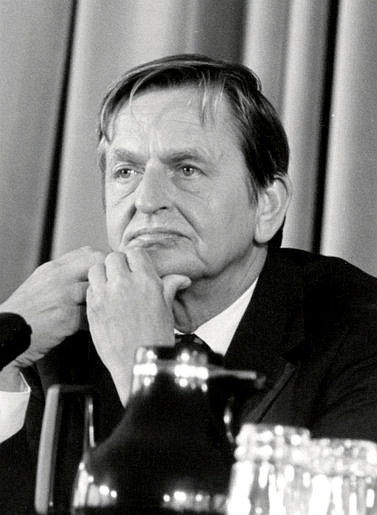
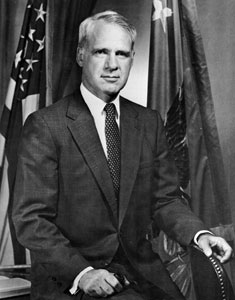
To avert this outcome, the CIA launched among the most successful covert operations of the Cold War with Britain’s MI6 in September-October 1982, during which it staged an incursion by Soviet submarines into Swedish waters to make it look like Sweden was coming under attack on its home soil for the first time since 1809.[3]
More than 750 journalists were brought into the Swedish Navy’s Press Center where they reported on complex operations being carried out by the Swedish Navy against the “Soviet intruder” that included the use of depth charges.[4]
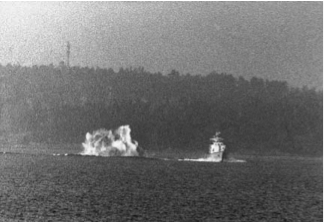
The “war” against the Soviets entered the living rooms of every Swede and was front-page news in the U.S. and Europe. Even the head of Sweden’s Communist Party, Lars Werner, believed the official story and that Sweden had a right to protest the Soviet Union’s actions.
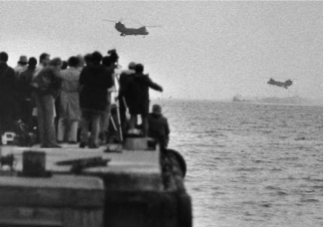
It was all, however, an optical illusion as the submarines were British, Italian and American ones sent on provocative missions along with a few Soviet ones that had been baited into Swedish waters, and Sweden was never really at war with the Soviets.
The Soviets had been set up in a covert psychological/black-flag operation that was vital in shifting Swedish opinion and undermining Palme’s détente policy.
Whereas in 1980 only 5-10% of Swedes viewed the Soviet Union as a direct threat, by 1983 45% viewed it as such. In the same period, the number of Swedes viewing the Soviets as unfriendly increased from 30% to 80%.
Ola Tunander’s book, The Secret War Against Sweden: U.S. and British Submarine Deception in the 1980s (London: Frank Cass, 2004), provides significant evidence in exposing a U.S.-UK false-flag operation that had huge political implications.[5]
Tunander writes that the “Anglo-American deception operation” involving the phony Soviet submarine attack made Palme’s disarmament initiatives “look pathetic,” put the Swedish Social Democrats on the defensive, and mobilized large parts of the Swedish population against the Soviet threat, which appeared to be real.[6]
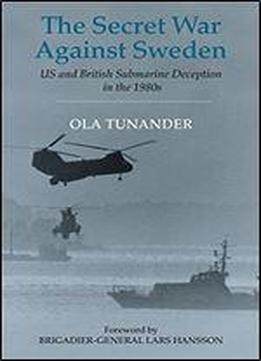

Whereas only 15-20% of Swedes before the incident were in favor of increasing military spending, more than 50% favored it afterwards.
The ripple effects can still be felt today as Palme’s vision of peaceful cooperation with the Russians has been totally eradicated and Sweden is about to become a member of NATO—which Palme would have abhorred.
Official Version of History Debunked
Officially, following the stranding of a Soviet Whiskey class submarine in 1981 on the Swedish archipelago, a series of massive submarine intrusions took place within Swedish waters, which was later described as the first Soviet military initiative against a Western European state since the Berlin crisis of 1960/61 resulting in the erection of the Berlin Wall.
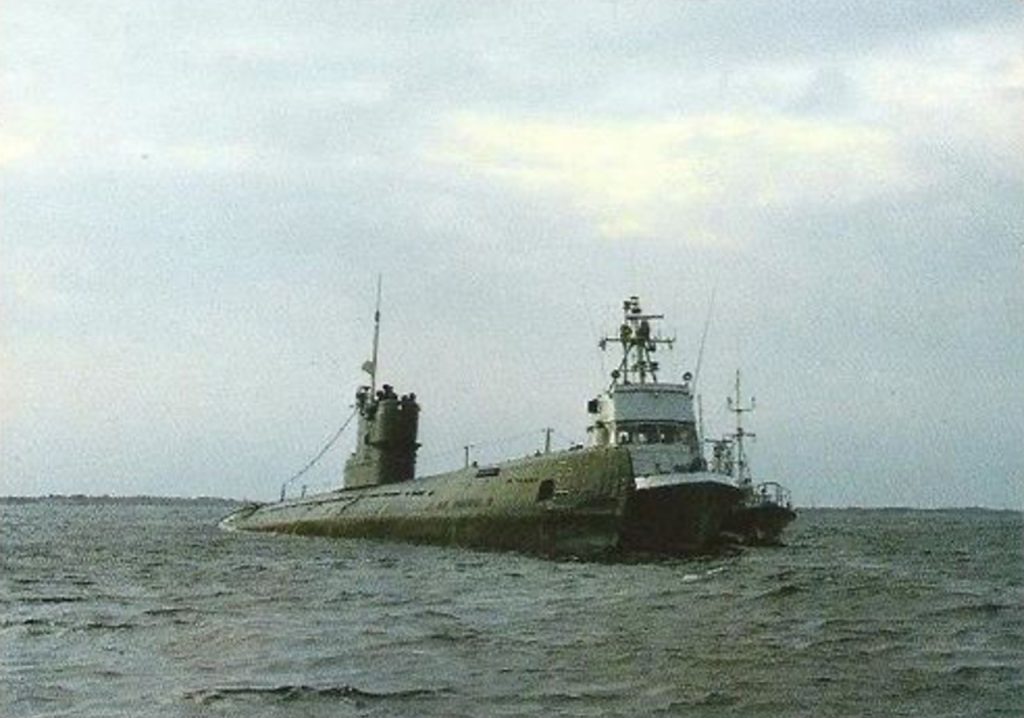
After a dramatic submarine hunt in 1982, a Swedish commission said that six Soviet submarines had carried out war games in the Stockholm archipelago, including one in Stockholm harbor. The Swedish government protested to the Soviet Union and diplomatic relations between the two countries were effectively destroyed.
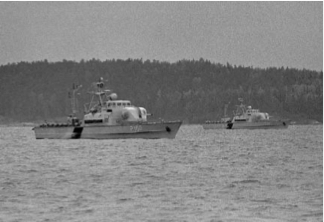
Milton Leitenberg, a think tank analyst with the Washington-based Center for Strategic and International Studies, claimed that the Soviets had carried out between 100-200 submarine incursions in Swedish territorial waters from 1980 to 1986 in what became the standard view embraced in the media and academia.[7]
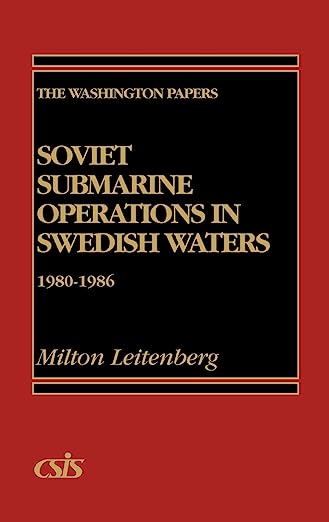
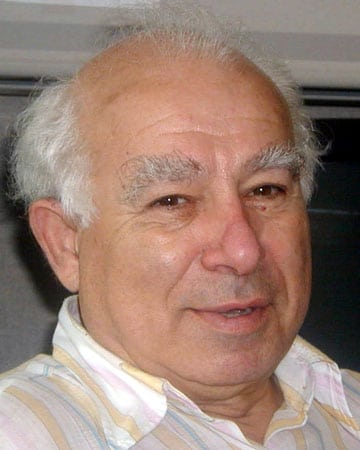
In 1990, Jack Anderson and Dale Van Atta wrote in The Washington Post, referring to CIA sources, that the submarine “incidents in Swedish waters have continued at a rate of 30 or more a year, and they have become even more daring.” This Soviet arrogance was, according to Anderson and Van Atta, an argument for not taking Soviet President Mikhail Gorbachev’s courting of Western Europe seriously.
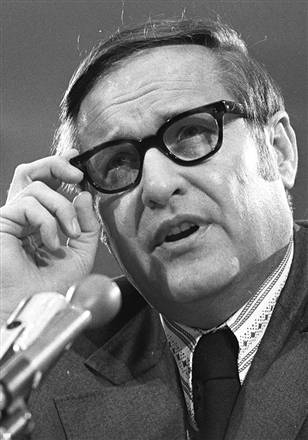

Classified documents revealed years later, however, point to covert Western, rather than Soviet, activity and that the Soviet intrusions were manipulated or simply invented.
Former U.S. Defense Secretary Caspar Weinberger acknowledged in a November 1981 Swedish TV interview that Western testing operations had been carried out regularly in Swedish waters.
Captain Robert Bathurst, the Assistant U.S. Naval Attaché to Moscow in the mid-1960s and Pentagon Director for Eastern European Affairs, also said that U.S. submarines had operated near Swedish waters at the time of the incident.
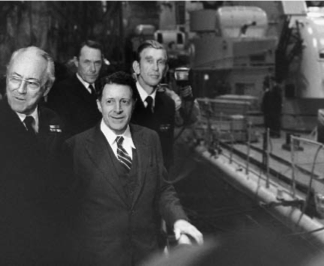
An anonymous source confirmed Weinberger’s statement in 2001 when he wrote to Rolf Ekéus, Sweden’s Ambassador to the U.S. from 1997 to 2000, who was carrying out a Swedish government investigation:
“In the early 1980s, we routinely received a number of Swedish military/political delegations [NB not diplomatic] for ‘near-top consultations’… [One] talked about your problem with Soviet subs and literally invited us to test the Swedish defense with a ‘free-in-out guarantee.’ Your naval people wanted this to have your government shift budgets from air to naval defenses. So CW [Caspar Weinberger] promised that you’d have some subs to play with. That Whiskey sub must have been a real heaven sent gift for them though everyone here had a good laugh over the gullible Swedes!”
But this was not really something to laugh about since big lies were told, the prospect of world peace was compromised, and billions of dollars would come to be diverted into a destructive arms race.
Further corroboration that the public had been misled was given to Tunander by a) a senior Norwegian diplomat, Einar Ansteensen, who had been told by a senior U.S. Navy officer that a submarine that was damaged in Hårsfjärden was American rather than Soviet; b) Swedish Defense Minister Anders Thunborg who told Tunander that Sweden had no evidence that the Soviets were behind the incursions; c) British Navy Minister Sir Keith Speed, who spoke about a “penetration dive exercises deep within Swedish waters” by the British Royal Navy; and d) Royal Navy submarine captains who admitted to having carried out top secret operations in the Swedish archipelago.
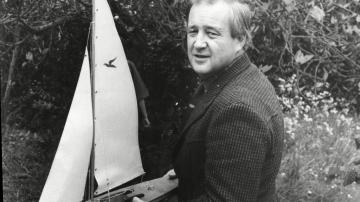
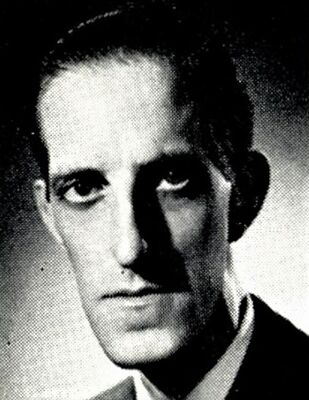
In an interview with Dirk Pohlmann, who directed “Deception: The Reagan Method—Cold War in the Great North,” James “Ace” Lyons, Deputy Chief of Naval Operations from 1983 to 1985, said—with what appeared to be a wink—that, while some things are best kept to oneself, “that could have been an American operation.”
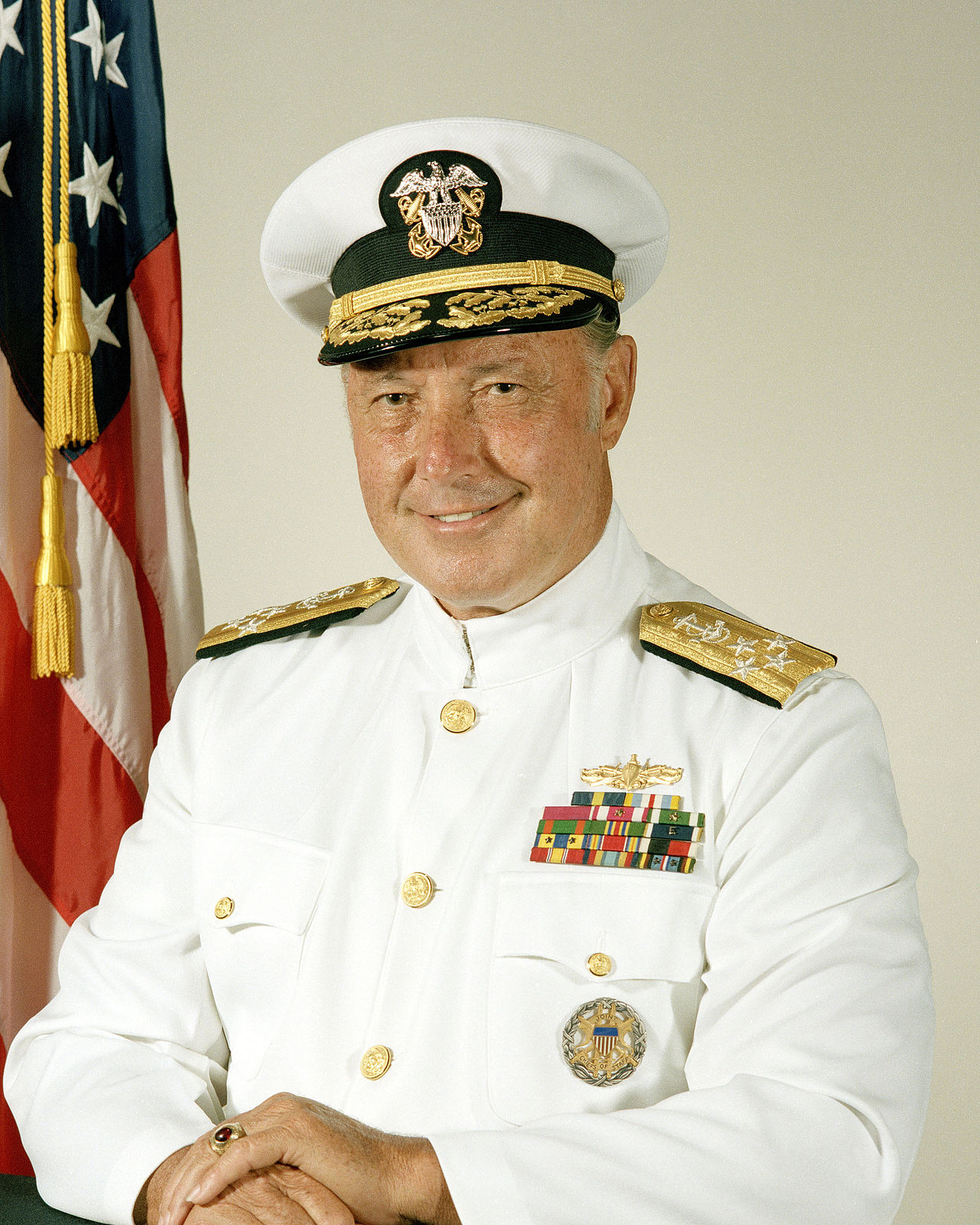
Underwater U2
Senior U.S. officials confirmed Ansteensen’s testimony, describing the U.S. submarine that was damaged at Hårsfjärden as an “underwater U2,” referring to the U.S. spy plane.
The officials said that U.S. Special Forces wore Soviet uniforms, and used Soviet weapons and communications systems and even a Soviet Whiskey class submarine that had been seized to carry out the successful masquerade.
U.S. Navy SEALs could not be identified and only a tiny number of Americans, and on the Swedish side only a couple of informal contacts loyal to the U.S., were informed about what was really going on.
Luring the Soviets into a Trap
In The Secret War Against Sweden, Tunander details a secret September 1982 operation called NOTVARP, confirmed to him by Swedish Deputy Chief of Defense Staff Intelligence Commander Björn Eklind and by the local Coastal Defense Commander, Colonel Lars G. Persson, in which U.S. naval ships, including the USS Belknap which had recently participated in a NATO training exercise, acted as bait to lure Soviet submarines into a trap.
Once the Soviet subs were pushed into Swedish waters, the sailing routes were sealed off with submarine nets and mine barrages in an attempt to “deny the submarines the possibility of escape.”
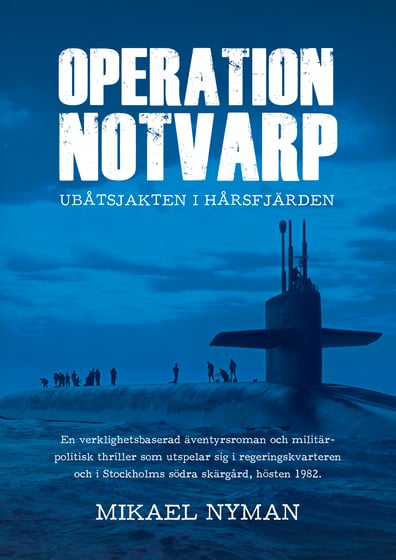
When Karl Andersson, the Chief of Staff of the Swedish Navy’s southern headquarters at Karlskrona, was informed by fishermen that a sub was beached in a fjord, he was given instructions not to question the submarine commander.
It was soon after apparent that the beaching had been staged since a sand-bank was found behind the propeller and not in front of it, and the ship was turned so it could not slide off the reef.
Nobody would be so stupid as to drive a submarine into a fjord in that way unless it was all a set-up, Andersson thought.
The existence of a covert operation was further evident in sightings outside the southern Stockholm archipelago of the U.S. tanker Mormacsky, manufactured by Ingalls, which was used by the U.S. Navy and CIA as a support ship for covert operations.
According to Tunander, the Mormacsky was able to transport smaller submarines or submersibles in a hidden hangar below the surface similar to what was done during World War II.

Tell-tale Signs of a Black Operation
While Swedish military personnel believed that they were hunting Soviet submarines, Norwegian military intelligence’s analysis of tape recordings of their propellers led them to believe that the subs were not Soviet but Western ones, and more specifically American, based on their sounds. These tapes were subsequently seized by Americans.
The size of the submarines indicated that they were either West German, Danish, Italian or U.S. subs and not Soviet ones, as there were no Soviet subs that were the same size (20-55 meters long).
A sea-floor investigation showed that submersibles deployed in a mission that navigated the sea floor made markings that were not characteristic of Soviet subs.
Information that came to light about a sub in Karlskrona in February-March 1984 related to its propeller signified that it was a U.S. Sturgeon or Los Angeles class vessel.[8]
The release of a green chemical dye into the water Näsudden-Käringholmen and at Måsknuv-Mälsten was another sign that the subs were American or British, i.e., not Soviet, which could not have released that kind of dye.[9]
A Norwegian intelligence officer told Tunander that the Americans were likely to release the dye in a secret operation in order to get real time information by directing a satellite to focus on the area of operation. The dye on the surface, released deliberately through a pipe in the submarine, would immediately tell Washington of the position of the submarine, with which Washington could in turn communicate.[10]
More Indications of a Black Flag
During the height of the crisis, intelligence briefings spoke of low activity within the Soviet Baltic Fleet—that is, no particular state of readiness. Ships participated in the celebration of the Soviet Constitution Day, but nothing could be linked to the activities in the Swedish archipelago.
Swedish signals intelligence also had nothing on the Soviets, as a Swedish government commission revealed.
Dirk Pohlmann interviewed Boris Pankin, the Soviet ambassador to Sweden from 1982 to 1990, who had told Palme during the crisis to bomb the subs as they “are not ours.”
Some years later, Pankin inquired with high-level Soviet officials whether there were ever any subs that had crossed into Swedish waters, and he was told that “there were not documents or evidence indicating [the presence of] Soviet subs in Swedish waters [as part of any military operation].”
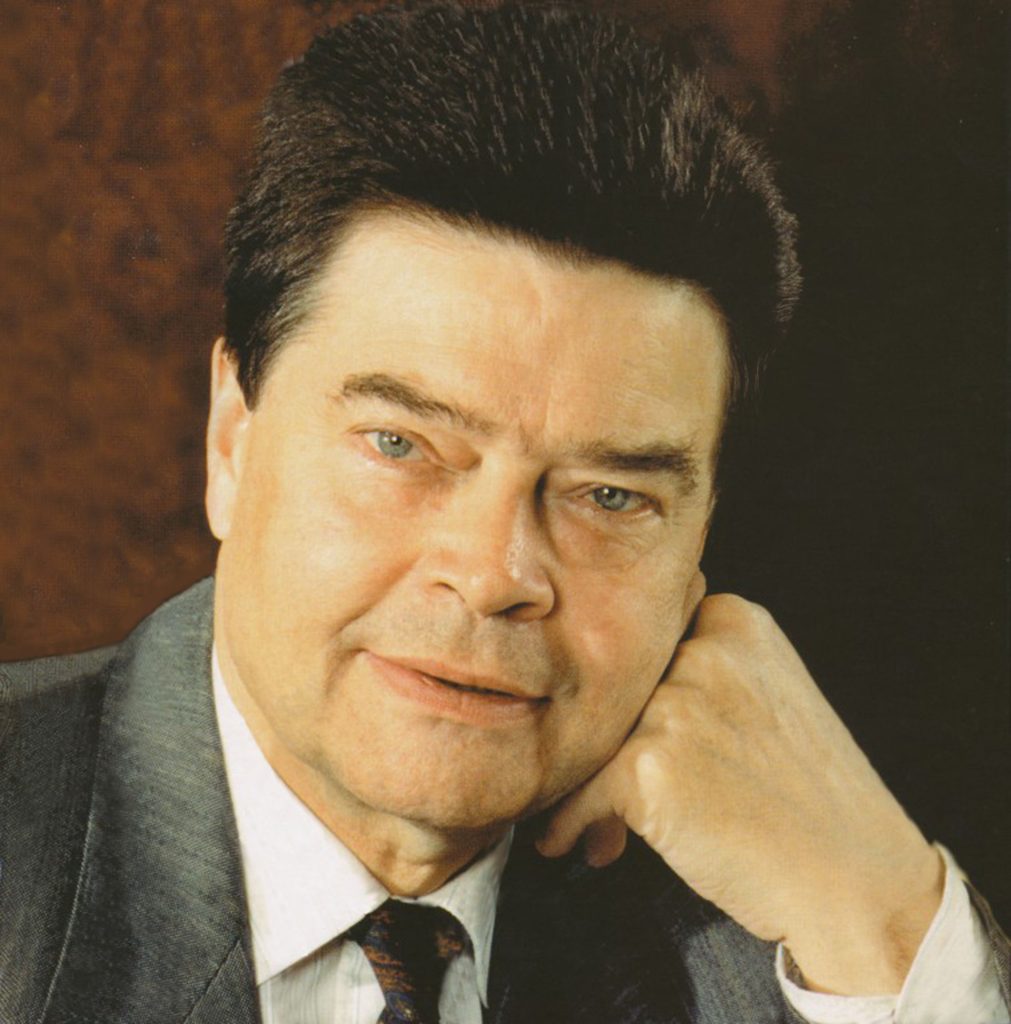

Top Spooks Appears To Have Directed It

Sweden’s NATO liaison officer and naval chief, Per Rudberg, was very close to Admiral Bobby Ray Inman, former chief of U.S. Naval Intelligence, and from February 1981 to June 1982, Deputy Director of the CIA.
The two even went on holiday together. In the 1960s, Inman had served as U.S. Assistant Naval Attaché to Stockholm and deployed listening devices in Sweden’s waters, which assisted considerably in the covert operation.
According to historian Peter Schweizer, Inman’s boss, CIA Director William Casey, a gung-ho proponent of covert operations, flew from Rome to Stockholm in his own aircraft during the period of the submarine incursions.
He had a meeting and lunch with a couple of Swedish military officials, so may have been directly involved in the submarine deception operation that was carried out by the CIA using Navy platforms, according to the CIA.
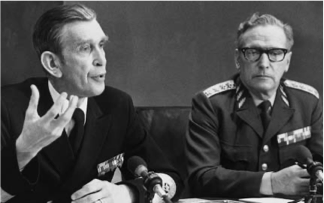
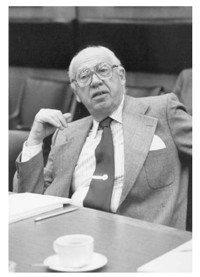
According to Dirk Pohlmann, Casey headed a Deception Committee in the Reagan administration that had the authority to carry out covert operations like the one in Sweden as part of an aggressive military strategy designed to defeat the Soviet Union and win the Cold War.
The deception committee targeted Sweden because it was considered an “Air Force carrier” for U.S. military operations targeting the Soviets that had been integrated into NATO’s war plans, and because the CIA considered Palme to be a KGB asset and barrier to the implementation of its hard-line foreign policy strategy.
Historical Pattern and Training
In April 1954, according to Tunander, U.S. aircraft penetrated Swedish air space in a secret psychological warfare operation that was designed to harden Cold War sentiments by having the public believe that the aircraft were Soviet.
Starting around 1960, U.S. submarines, possibly under CIA command, started carrying out secret operations in both Norway and Sweden whose aim was to convince the public of the Soviet danger while testing both Norway and Sweden’s coastal defenses.
In one instance, CIA officers approached high-ranking Norwegian officers to tell them about intruding Soviet submarines. However, the concrete information presented by the Americans was not reliable.
In 1984, the U.S. Chief of Naval Operations, Admiral James Watkins, set up a “terrorist” force—the “Red Cell” or the Navy Security Coordination Team (NSCT), recruited from former members of the anti-terrorist SEAL Team Six under Richard Marcinko—to test security and readiness at U.S. Navy bases worldwide to convince the officer corps of the reality of the insurgent danger.
According to Marcinko, in the 1970s and 1980s, SEAL team officers operated in Soviet uniforms, with Soviet weapons and communication systems, and they even had a Soviet Whiskey class submarine.
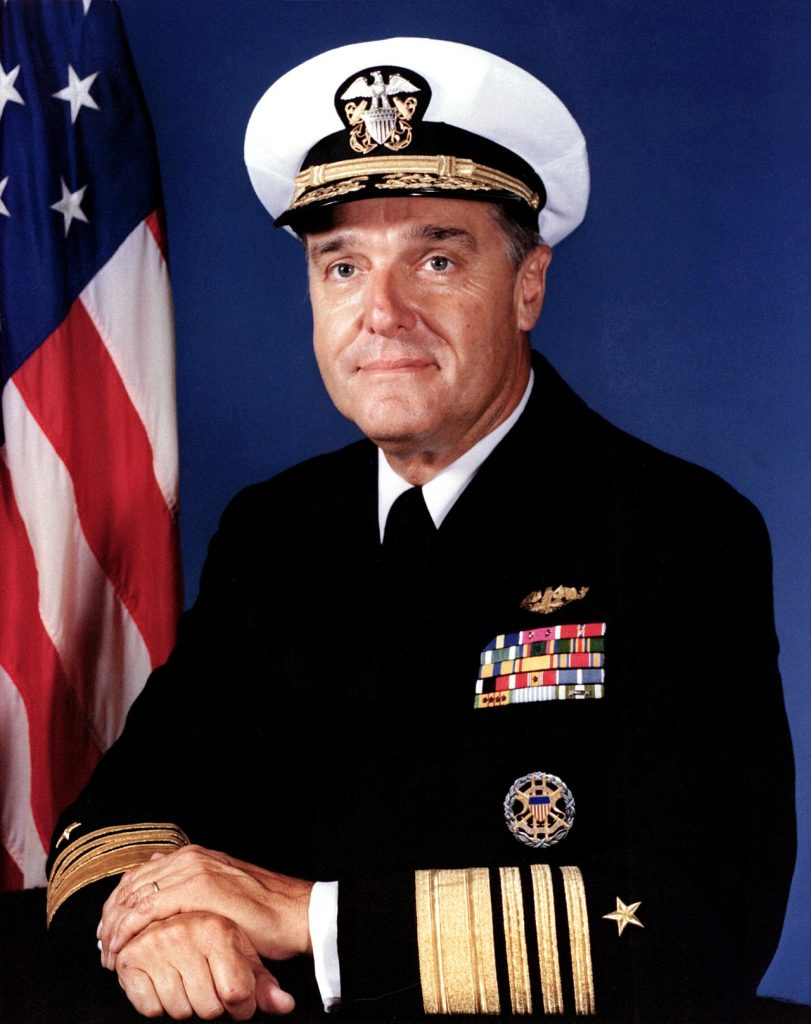

Operating covertly in Norway, SEALs were trained in this period in harbor penetration from submarines in the Baltic and carried out training exercises in unconventional warfare in Scandinavian waters where they masqueraded as Soviet forces.
SEAL Team Six’s operations, testing U.S. or friendly coastal defenses, were carried out under the command of General Alexander Haig, Supreme Allied Commander Europe (SACEUR) during the 1970s and a key figure in setting up Richard Nixon in the Watergate scandal who served as U.S. Secretary of State from January 1981 to July 1982.

In March 1983, Haig visited Sweden and supposedly told a surprised Swedish top official, “it is good that you let the submarine out” in a possible slip of the tongue.
Italian Gladio Network
“Ace” Lyons told Tunander that the U.S. operations in Swedish waters were run from Italy and that Italian submarines were used for plausible deniability purposes. “We could say that Italian captains are adventurous. You can’t trust the Italians.”
Leading representatives of the Italian special forces, Prince Junio Valerio Borghese, Admiral Gino Birindelli, Director of SISMI General Giuseppe Santovito and his predecessor Admiral Eugenio Henke were close to four Americans who were intimately involved in planning the Swedish deception operation, notably General Alexander Haig, William Casey, Secretary of the Navy John Lehman and his Chief of Naval Operations, Admiral James Watkins.

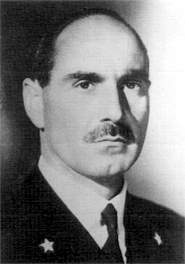

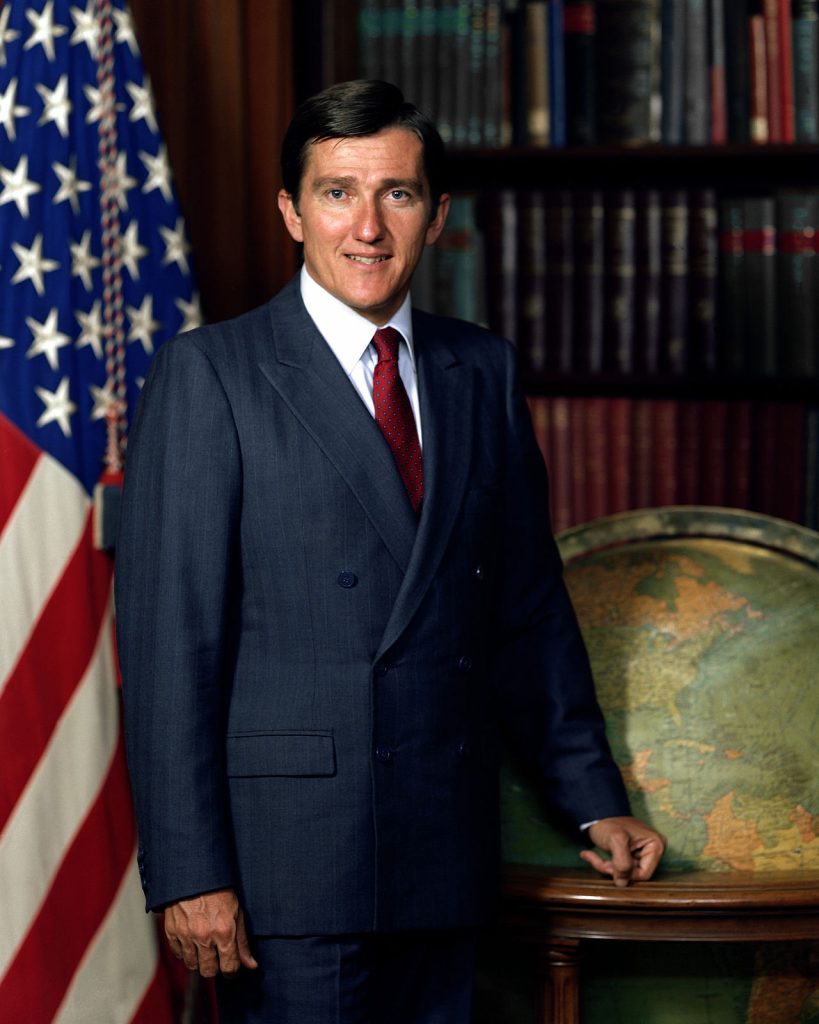
All of these individuals were involved in the top-secret Operation Gladio in Italy, which involved the training of stay-behind armies and adoption of black-flag and deception operations that were designed to manipulate public opinion with the goal of supporting U.S. corporate-military interests and empowering the political right.[11]
Hysterical Climate and Palme’s Assassination
In 1985, Swedish Foreign Minister Lennart Bodström admitted to the press that it had been proven in only two cases that sub-surface submarine operations had originated from the Soviet Union and that it was impossible to protest against an intruder that had not been identified.
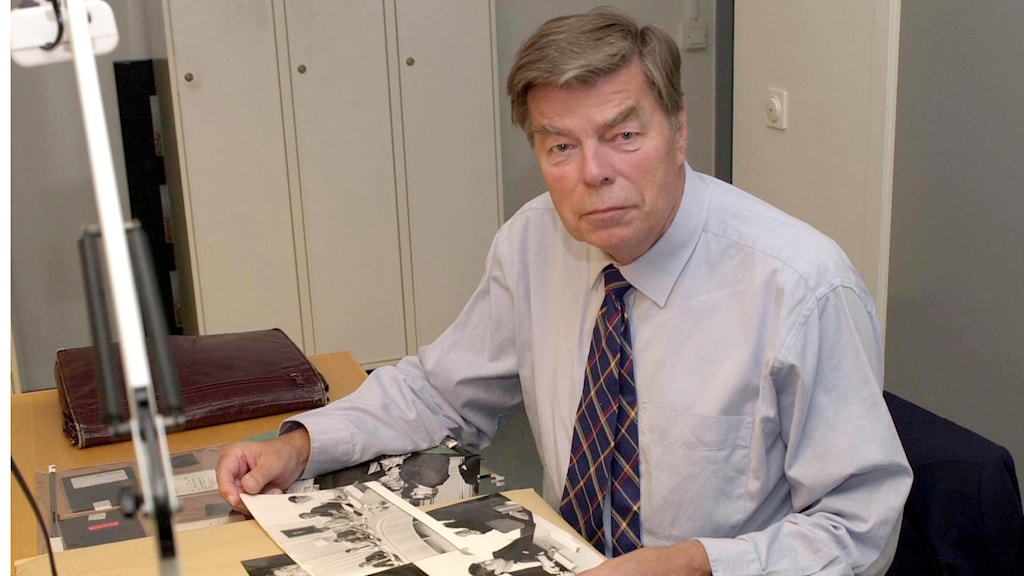
Amidst the hysterical anti-Soviet climate of the time, these statements were considered to be heretical, and Palme, caving to public pressure, dismissed him from the Swedish government.[12]
Less than a year later, on February 28, 1986, Palme was assassinated after he exited a movie theater in Stockholm.
German investigative journalist Patrik Baab and former Pentagon adviser Robert Harkavy provide evidence in a 2017 book that the CIA and British MI6, with the participation of NATO’s Stay Behind Gladio armies (paramilitary networks that could be activated in cases of national emergency) ordered Palme’s murder because Palme threatened to normalize Swedish relations with the Soviet Union. Baab and Harkavy specified that the assassin was an Iranian trained by the CIA.
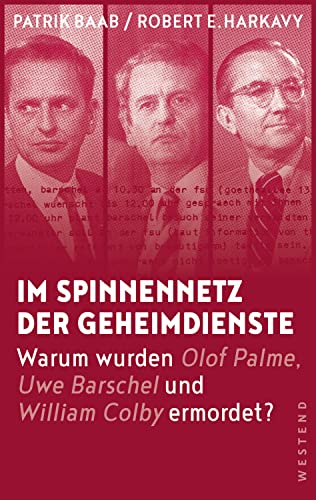
Seen in hindsight, Palme’s murder could have been the culmination of the covert psychological operation detailed in Tunander’s book whose ultimate purpose was to not only shift public opinion dramatically in a direction favored by the militarists, but also to remove Palme from office and eradicate him and everything that he represented.
Soviet President Mikhail Gorbachev (1985-1991) told Dirk Pohlmann that Palme’s murder was “not a coincidence,” but “a political and contract murder… If [Palme’s] vision had come through, it would have disturbed powerful interests. There are groups which are not interested in a better world.”[13]
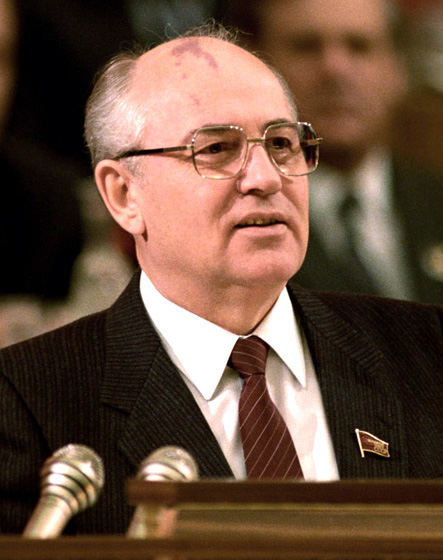
Creating a Hidden Reality
Tunander notes at the end of his book that, in a democratic country, propaganda in its traditional form is not very credible, because it can be repudiated by counter-arguments. “Real physical incidents” have to be created instead as a “false” or “new reality” to transform public opinion and influence military and political leaders.
The 1980s Soviet submarine scare in Sweden continues to have significant political ramifications in that it helped undermine Olof Palme and everything that he represented and set Sweden on the road to NATO membership.
The history is worth studying today because similar psychological warfare deception operations are being routinely adopted by the neo-conservatives in Washington, whose mentality and criminal daring has changed little since the Reagan era.

-
Elite intellectual opinion in Sweden favors joining NATO, though the majority of the population is divided about it. ↑
-
Because of these positions, Richard Nixon called Palme “that Swedish asshole.” ↑
-
This secret operation followed from the recommendations of William Taylor, a U.S. military specialist on psyops, who had warned about the Swedenization of Europe and advocated adoption of a psychological warfare operation that would shift loyalties in support of the United States. ↑
-
This was the first time that Sweden had used mines against an enemy since World War II. A few left-wing journalists at the time, notably Anders Hasselbohm, questioned what was being presented, believing correctly that the submarines were underwater ghosts and that the Navy wanted to use them as an argument for a bigger budget. At the time, however, such critics were not taken seriously. Nils Sköld, former Lieutenant General who charged that the public had been deceived and that the Soviets had never attacked, was dismisssed as being senile though he had only left office the previous year that he made the allegations. Later, Dagens Nyheter journalist Olle Alsén and freelance writer Tommy Lindfors also wrote about possible Western and U.S. involvement. ↑
-
A 1984 book published in Swedish by Anders Hasselbohm, The Submarine Threat: A Critical Review of the Hårsfjärden Incident and the Submarine Defence Commission Report, first presented evidence that the submarines were not Soviet but Western ones. ↑
-
Elsewhere Tunander wrote that the operations “turned the whole nation against the Soviet Union and they turned the Swedish military organization and particularly the Navy against controversial Prime Minister Olof Palme, who preferred a continued dialogue with Moscow.” ↑
-
One suspects that Leitenberg is connected with the CIA, though it is possible that he himself was deceived and relied on flawed media reports. Leitenberg is otherwise known for his fervent denunciation of scholars who purport to expose the U.S. adoption of germ warfare in the Korean War. Leitenberg claims that 12 Soviet documents disprove that the U.S. used germ warfare in the Korean War. However, neither he nor anyone else has ever seen these documents; they were allegedly transcribed by a right-wing Japanese journalist. ↑
-
Chemical analysis of the oil from the submarine in Hårsfjärden made clear they were not Soviet. Other evidence, according to Tunander, made clear that the U.S. operated a “specially equipped nuclear powered attack submarine” in Swedish waters in the 1980s. One of the subs may have been the USS Seawolf which was equipped for operations in special operations and later operated off the coast of Libya where it was involved in provocative maneuvers designed to trigger a counter-reprisal that led ultimately to the U.S. bombing of Tripoli in 1986. ↑
-
The Soviets were known to use a chemical that released smoke on the surface of the water but not a dye of yellow or green powder, which was released into the Swedish waters. Navy experts told Tunander that U.S. subs released the kind of dye that was found if they sunk to a certain level. A Norwegian intelligence officer told Tunander that what he observed in Hårsfjärden “was not a Soviet submarine. We believed it was a Western submarine.” Later, this officer said: “This was not a known Soviet submarine. It was neither a conventional nor a nuclear Soviet submarine.” (p. 97) ↑
-
Photos of the dye were later suppressed. An intelligence officer with experience carrying out CIA operations explained to Tunander that the CIA used to use dyes in covert operations. ↑
-
See Daniele Ganser, NATO’s Secret Armies: Operation GLADIO and Terrorism in Western Europe, with foreword by John Prados (New York: Routledge, 2004). ↑
-
According to Tunander, Palme had never been convinced by the Commission Report that the intrusions were carried out by the Soviet Union, but it was politically impossible for him to deny its results and not to act in response. He had been backed into a corner that was one purpose of the covert operation. ↑
-
Palme’s assassination occurred just two weeks before he planned a major state visit to Moscow that could have resulted in a breakthrough in Soviet-Swedish and European relations and for world peace. ↑
CovertAction Magazine is made possible by subscriptions, orders and donations from readers like you.
Blow the Whistle on U.S. Imperialism
Click the whistle and donate
When you donate to CovertAction Magazine, you are supporting investigative journalism. Your contributions go directly to supporting the development, production, editing, and dissemination of the Magazine.
CovertAction Magazine does not receive corporate or government sponsorship. Yet, we hold a steadfast commitment to providing compensation for writers, editorial and technical support. Your support helps facilitate this compensation as well as increase the caliber of this work.
Please make a donation by clicking on the donate logo above and enter the amount and your credit or debit card information.
CovertAction Institute, Inc. (CAI) is a 501(c)(3) non-profit organization and your gift is tax-deductible for federal income purposes. CAI’s tax-exempt ID number is 87-2461683.
We sincerely thank you for your support.
Disclaimer: The contents of this article are the sole responsibility of the author(s). CovertAction Institute, Inc. (CAI), including its Board of Directors (BD), Editorial Board (EB), Advisory Board (AB), staff, volunteers and its projects (including CovertAction Magazine) are not responsible for any inaccurate or incorrect statement in this article. This article also does not necessarily represent the views the BD, the EB, the AB, staff, volunteers, or any members of its projects.
Differing viewpoints: CAM publishes articles with differing viewpoints in an effort to nurture vibrant debate and thoughtful critical analysis. Feel free to comment on the articles in the comment section and/or send your letters to the Editors, which we will publish in the Letters column.
Copyrighted Material: This web site may contain copyrighted material the use of which has not always been specifically authorized by the copyright owner. As a not-for-profit charitable organization incorporated in the State of New York, we are making such material available in an effort to advance the understanding of humanity’s problems and hopefully to help find solutions for those problems. We believe this constitutes a ‘fair use’ of any such copyrighted material as provided for in section 107 of the US Copyright Law. You can read more about ‘fair use’ and US Copyright Law at the Legal Information Institute of Cornell Law School.
Republishing: CovertAction Magazine (CAM) grants permission to cross-post CAM articles on not-for-profit community internet sites as long as the source is acknowledged together with a hyperlink to the original CovertAction Magazine article. Also, kindly let us know at info@CovertActionMagazine.com. For publication of CAM articles in print or other forms including commercial internet sites, contact: info@CovertActionMagazine.com.
By using this site, you agree to these terms above.
About the Author

Jeremy Kuzmarov holds a Ph.D. in American history from Brandeis University and has taught at numerous colleges across the United States. He is regularly sought out as an expert on U.S. history and politics for radio and TV programs and co-hosts a radio show on New York Public Radio and on Progressive Radio News Network called “Uncontrolled Opposition.”
He is Managing Editor of CovertAction Magazine and is the author of six books on U.S. foreign policy, including Obama’s Unending Wars (Clarity Press, 2019), The Russians Are Coming, Again, with John Marciano (Monthly Review Press, 2018), Warmonger. How Clinton’s Malign Foreign Policy Launched the U.S. Trajectory From Bush II to Biden (Clarity Press, 2023); and with Dan Kovalik, Syria: Anatomy of Regime Change (Baraka Books, 2025).
Besides these books, Kuzmarov has published hundreds of articles and contributed to numerous edited volumes, including one in the prestigious Oxford History of Counterinsurgency .
He can be reached at jkuzmarov2@gmail.com and found on substack here.

